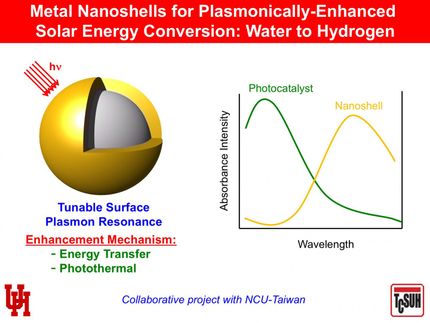Surface physics: Leaving the islands
In a recent study involving researchers from Ludwig-Maximilians-Universitaet (LMU) in Munich, the desorption of oxygen molecules from a silver surface was successfully visualized for the first time. The effects account for the shortcomings of conventional models of desorption.
In a recent study involving LMU researchers, the desorption of oxygen molecules from a silver surface was successfully visualized for the first time. The effects account for the shortcomings of conventional models of desorption.
In heterogeneous catalytic reactions, which take place at the boundary layer between a solid and the gas phase, the products finally have to desorb from the surface of the solid. This happens, for example, in the catalytic exhaust converters in automobiles. A research team led by Professors Joost Wintterlin (LMU Munich), Sebastian Günther (TU Munich) and Dr. Andrea Locatelli (Syncrotron Elettra, Trieste) has now, for the first time, imaged such a desorption process in microscopic detail. As they report in "Nature Communications", their results explain why conventional calculations of desorption rates are often incorrect.
In heterogeneous catalysis, the catalyst is a solid, e.g., a metal or metal oxide, to which the reactants adsorb. The catalytic reaction takes place on the surface, and the products then spontaneously desorb. Unlike the complicated processes that occur on the surface during the catalytic reaction itself, the process of desorption was thought to be relatively simple: The reactants gain thermal energy from the solid surface, and desorb as soon as this energy exceeds the binding energy to the surface. This picture suggests that desorption is a purely statistical process that only depends on the number of molecules. "However, in many cases, the desorption rates calculated using this model do not agree with the experimentally determined values," says Joost Wintterlin.
Imaging with nanometer resolution
The experiments carried out by Günther, Wintterlin and their colleagues reveal that not only the number of adsorbed molecules but their spatial distribution on the surface is important. In their study, the team employed low-energy electron microscopy (LEEM), which allows one to image solid surfaces with nanometer resolution, to follow what goes on during the course of temperature-induced desorption. LEEM works similarly as conventional electron microscopy. The only difference is that the energetic electrons that form the beam are decelerated just before they hit the surface of the sample. With the help of this technique, the researchers were able to monitor desorption of oxygen from a silver surface.
"It turned out that, during desorption, the layer of absorbed molecules breaks up into many isolated islands, and desorption takes place exclusively from the edges of these islands," says Sebastian Günther. Moreover, the size distribution of the islands depends on the pretreatment of the silver surface. "Together, these effects account for the discrepancies between theoretical predictions and experimental measurements of desorption rates reported in earlier studies. They probably play a role in many other processes involving desorption from surfaces, and could change our concepts of the processes on catalytic surfaces," Günther adds.
Most read news
Other news from the department science

Get the chemical industry in your inbox
By submitting this form you agree that LUMITOS AG will send you the newsletter(s) selected above by email. Your data will not be passed on to third parties. Your data will be stored and processed in accordance with our data protection regulations. LUMITOS may contact you by email for the purpose of advertising or market and opinion surveys. You can revoke your consent at any time without giving reasons to LUMITOS AG, Ernst-Augustin-Str. 2, 12489 Berlin, Germany or by e-mail at revoke@lumitos.com with effect for the future. In addition, each email contains a link to unsubscribe from the corresponding newsletter.
























































